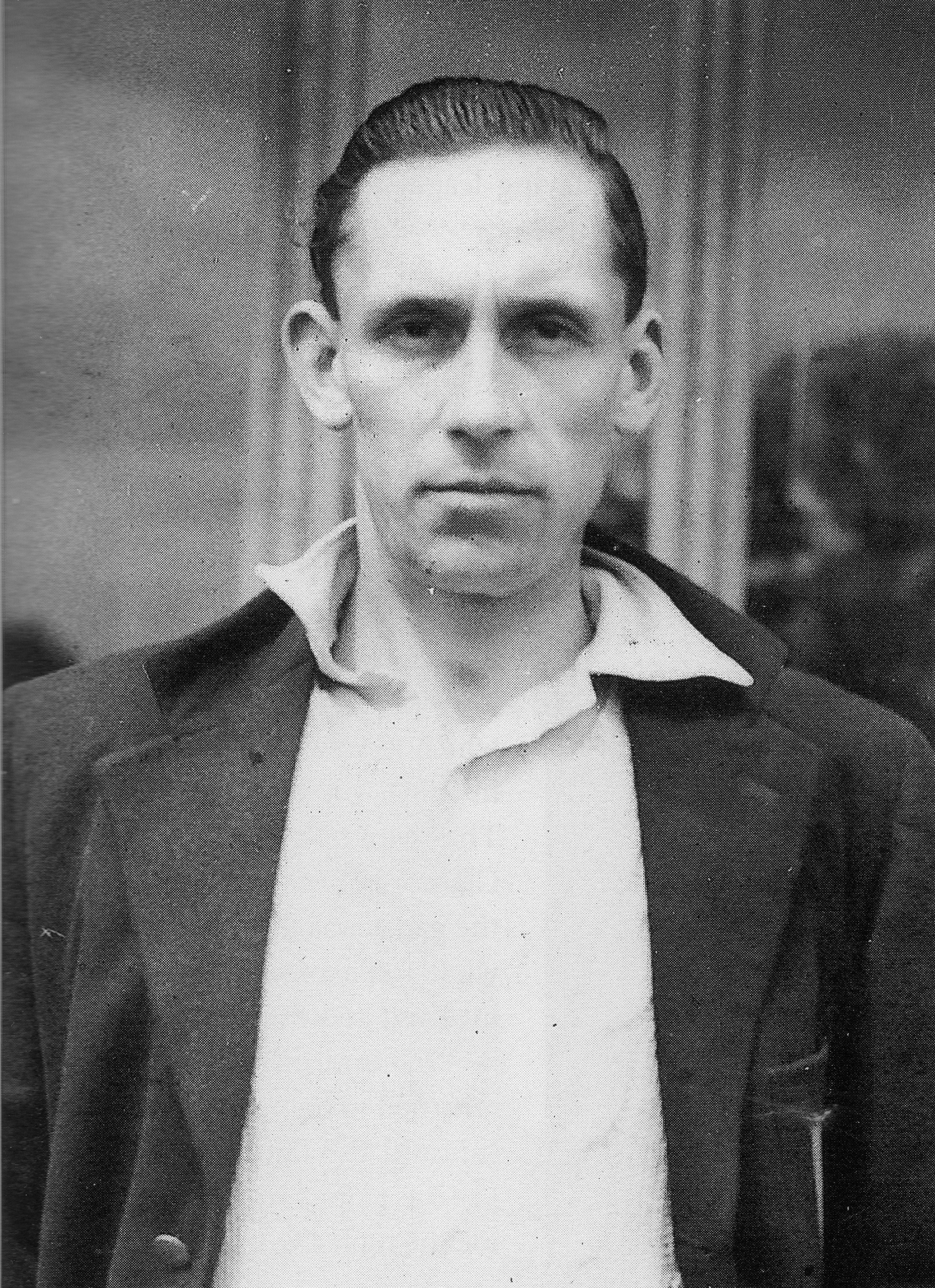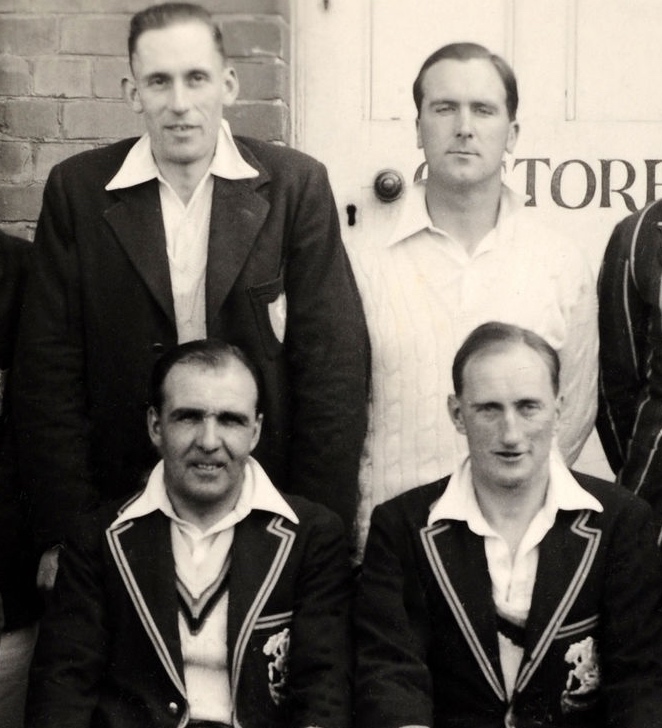
Norman Harding 1916 – 1947
As I write this, about ten days into what might be three or more months of self-isolation, anybody might be excused for thinking that the prospect of no cricket to watch or play for most of the summer is a pretty grim one. It got me thinking about the last time there was virtually no first-class cricket in an English summer – in 1945, Kent CCC’s 75th year. Perhaps the country is destined to have a major crisis which shuts down cricket every 75 years, in which case I’m glad I won’t be around in 2095.
Although Kent did not play any first class games in 1945, they did get sides out onto the pitch several times. Wisden reports that “Kent anticipated resuming cricket on very much the same lines as before the war.” It also reported that 579 games were played at the St. Lawrence ground during the six war years, despite the fact that 138 incendiary bombs dropped on the playing area during those years, “with negligible damage”, as the Kent committee reported, “in fact the ingredients appeared good for the grass.”
Wisden gives the scores of two matches played in 1945, one by ‘A Kent XI’ against Northamptonshire, played at Foxgrove Road, Beckenham, and one described as Kent v The Rest at Canterbury. The Kent XI which turned out at Beckenham included E.D.R. Eagar, father of Patrick Eagar the photographer, and a Hampshire man through and through. It also included Alan Hilder, a Sussex man, and one L.J. Underwood, who went on to play one match for Kent Seconds in 1948. No relation of Deadly, it appears. Also playing in that game was Norman Harding, a man whose career was cut short by a disease even more lethal than the coronavirus.
Norman Harding was a fast right-arm bowler who bowled very straight and on his day could be very sharp. Born in Hampshire in 1916, he made his debut for Kent in August 1937, largely on the strength of his performance for county 2ndXI earlier in the month, when he took nine wickets in each innings against Wiltshire (9-39 and 9-61), a feat that had not been achieved in first-class or Minor Counties cricket at that time. His first class debut came against Gloucestershire at Dover. It was a remarkable game, not least for the astonishing start that Charles Barnett gave to the Gloucestershire innings, hitting 70 out of 90 for the first wicket in 34 minutes. His opening partner, the England rugby international Grahame Parker, then went on to compile the highest score of his career, 210, out of a total of 434, and during the course of that innings, poor Norman Harding, on debut, had three catches dropped in the slips off consecutive balls. He finished with 1 for 104 off 24.1 overs, his one wicket being the number 11, the wicketkeeper Bert Watkins, who thrashed all of the 25 runs in the last wicket partnership.
Things looked up for Harding after that match (which Kent won by eight wickets, thanks to yet another hundred by the ageless Frank Woolley, then well into his fifties). He was looked on as somebody with a promising future, once he filled out a bit. Harding’s problem was that he never did fill out a bit. He was invalided out of the army during the war, and was never completely fit afterwards. All the same, he played consistently for Kent up to the outbreak of war, and in the two years after it. In all he played 83 matches for the county and took 229 wickets at 28.30. As a slightly-better-than-rabbit tailender, he scored 966 runs, including two fifties, at just under 10 runs per innings.
In 1945, Wisden records that Harding played not only against Northamptonshire (no wickets and did not bat, as Kent won the one-day game by 70 runs), but also against The Rest, a side largely made up of other Kent stalwarts, including David Clark, Bill Murray-Wood and Hopper Levett. Derek Ufton, who had been picked as a last minute replacement for Fred Foy in the Kent side, remembers that there was a crowd of around 20,000, the match being held on the August Bank Holiday Monday, August 6th, the day the atomic bomb was dropped on Hiroshima. It was billed as a ‘Victory’ match, and took place on the same day as the Victory Test at Lord’s began. It rained most of the day at Canterbury, but the game went ahead to keep the crowd entertained. It was a good thing for Harding that it did. He exceeded even his efforts against Wiltshire, by taking all ten of The Rest’s wickets, for just 32 runs. Seven of his victims were clean bowled, one was lbw and two were caught. Derek Ufton, who batted at number eight, making just 3, and did not bowl or keep wicket, remembers misfielding a ball at third man, down in front of what is now the Underwood Knott Stand. A voice in the crowd shouted that it was hardly worth him coming today, was it, making Ufton realise that playing for Kent was very different from playing for Dartford.

Harding (top left) next to Godfrey Evans, and behind Leslie Ames and Bryan Valentine
Harding was awarded his county cap in 1947, cap number 112, and for a couple of seasons, in partnership with Fred Ridgway, he formed one of the most formidable opening bowling attacks on the county circuit. Unfortunately, Harding’s story does not have a happy ending. While we right now are keeping our social distances in order not to catch the coronavirus, Harding was powerless to avoid another killer disease for which at the time there was no cure. Just one month after playing in his final game, for Kent against the touring South Africans, and a week after contracting what Wisden called ‘infantile paralysis’ – polio – he died in a Berkshire isolation hospital. He was one of 688 people who died of polio in UK that year, out of 7646 cases. A further 750 or so were severely paralysed, although as a report on the outbreak stated, “65% were practically all right”. Harding was not one of those. He was just 31 years old. In a remarkable coincidence, his final first class victim was also a Norman, the South African left arm spinner Norman ‘Tufty’ Mann, who was to die in 1952, also at the age of 31.
The year after his death, Kent dropped from 4th to 15th place in the Championship, and while this plunge cannot be attributed solely to the loss of Norman Harding, the post-war record of the county side might have been very different if Harding had lived. As R.L. Arrowsmith’s History of Kent County Cricket Club states, Norman Harding “was universally liked and a great loss to the county.”
0 Comments